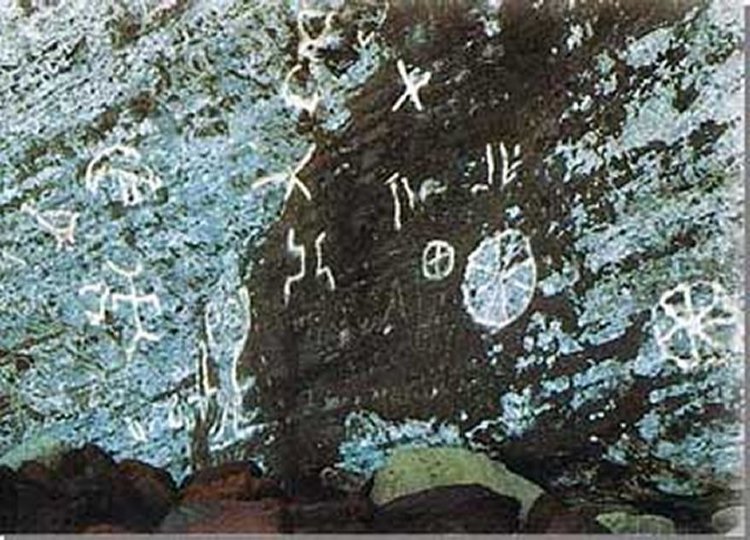Binary System Was Used By Ancient Polynesians 1,000 Years Before The Concept Of A Computer Was Introduced
A. Sutherland - AncientPages.com - Researchers say that our binary system is nothing but a re-invention based on ancient knowledge that existed centuries before the concept of a computer.
 1827 depiction of Tahitian pahi double-hulled war canoes. Engraved by Fumagalli. Plate N° 86; after an earlier artist. source
1827 depiction of Tahitian pahi double-hulled war canoes. Engraved by Fumagalli. Plate N° 86; after an earlier artist. source
When the German mathematician Gottfried Leibniz demonstrated the advantages of the binary system for computations as early as 1703, he laid the foundation for computing machines.
However, Leibnitz was not the first person to use binary numbers.
Researchers in Norway made this astonishing discovery after studying the language of the tiny Pacific island of Mangareva in French Polynesia. The residents of the island of Mangareva in French Polynesia were using a hybrid binary-decimal system before 1450.
One of two number systems traditionally used on Mangareva had three binary steps superposed onto a decimal structure.
The Mangarevan invention of binary steps, centuries before their formal description by Leibniz, attests to the advancements possible in numeracy even in the absence of notation and thereby highlights the role of culture in the evolution of and diversity in numerical cognition.
"Polynesian seafarers left Mangareva around AD 800 in search of quality stone for vital tools and found success on Pitcairn. Trade flourished between the islands, settlers made rough stone gods, carved human, animal, and geometric images on rock canvasses, created burial sites, and left many artifacts. The Bounty mutineers arrived in 1790 and found their temple platforms, petroglyphs, and stone tools giving evidence (and confirmed by Marshall Weisler) that Pitcairn had formerly supported an ancient Polynesian population, most probably from Mangareva..." according to the source.
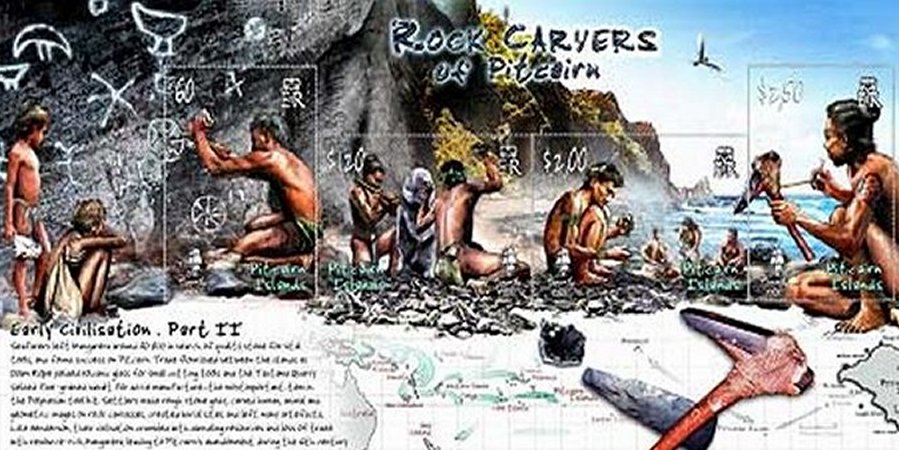 Image credit: Pitcairn Islands Philatelic Bureau
Image credit: Pitcairn Islands Philatelic Bureau
More than 300 years ago, the German mathematician and philosopher Gottfried Wilhelm Leibniz demonstrated the computational advantages of a binary number system, or base 2.
Although Leibniz's groundbreaking theory laid the foundation for computing with machines, humans continue to utilize verbal number systems built on base 10, raising the question of whether binary numeration is compatible with human cognition.
Pure binary arithmetic works according to the 'base two' system - '1's and '0's, rather than the conventional 'base 10' - 1,2,3,4,5, etc. - the counting system, which many cultures think of to have used due to counting on ten fingers.
Now, a new discovery questions the origin of the binary system and the date of its invention.
Andrea Bender, a cognitive scientist, and Sieghard Beller at the University of Bergen in Norway looked at the number systems in related Polynesian languages. Their research appears in the Proceedings of the National Academy of Sciences.
They discovered that the Polynesians who arrived in Mangareva over 1,000 years ago used a decimal system, as other Polynesians did. However, by A.D. 1450, the Mangarevans were using a procedure that combined base 10 and base 2. In the Mangarevan language, there are words for the numbers 1 through 9, as with all decimal systems.
For numbers 20 to 80, ancient Polynesians used a binary system with separate one-word terms for 20, 40, and 80.
Ancient Polynesian rock carvings. Image credit: Pitcairn Islands Philatelic Bureau
"Those were probably the numbers that were most frequent in their trading and redistribution systems. For that specific range, it was helpful to have these binary steps that make mental arithmetic much easier.
They did not have a writing or notational system, so they had to do everything in their mind, said Andrea Bender.
This system evolved to help people solve complex mental arithmetic and played a vital role in Mangarevan culture, where people often traded large quantities of goods or offered them as tribute. The Mangarevans used their system to count precious objects, including coconuts, fish, and octopuses.
We have always assumed Leibniz was the first to introduce the binary system. Still, this recent discovery clearly shows ancient people were familiar with binary numbers a very long time ago, and we have only re-invented the method we use today.
Currently, the Mangarevan language risks extinction, and the locals use the Arabic digits and the decimal counting system used in large parts of the world.
Written by – A. Sutherland - AncientPages.com Senior Staff Writer
Updated on November 13, 2022
Copyright © AncientPages.com All rights reserved. This material may not be published, broadcast, rewritten or redistributed in whole or part without the express written permission of AncientPages.com
Expand for referencesMore From Ancient Pages
-
 25 Stone Age Caves And Rock Carvings Found In Odisha, India
Archaeology | Mar 30, 2017
25 Stone Age Caves And Rock Carvings Found In Odisha, India
Archaeology | Mar 30, 2017 -
 Rediscovery Of Lost Tombs And Quarries On A British Military Base In Cyprus
Archaeology | Mar 7, 2024
Rediscovery Of Lost Tombs And Quarries On A British Military Base In Cyprus
Archaeology | Mar 7, 2024 -
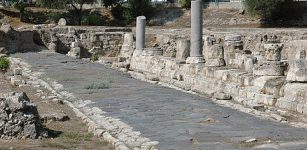 Biblical City Of Tarsus: Excavations Reveal Its Secrets From Paul the Apostle’s Times
Archaeology | Jan 4, 2016
Biblical City Of Tarsus: Excavations Reveal Its Secrets From Paul the Apostle’s Times
Archaeology | Jan 4, 2016 -
 Was Tintagel Castle A Fortress Used By Iconic Hero King Arthur?
Featured Stories | Jul 12, 2022
Was Tintagel Castle A Fortress Used By Iconic Hero King Arthur?
Featured Stories | Jul 12, 2022 -
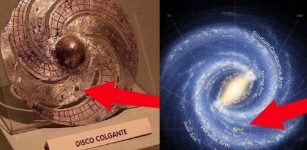 Mysterious 2,000-Year-Old Disco Colgante – Unknown High-Tech Device, Representation Of A Spiral Galaxy Or Something Else?
Artifacts | Nov 20, 2020
Mysterious 2,000-Year-Old Disco Colgante – Unknown High-Tech Device, Representation Of A Spiral Galaxy Or Something Else?
Artifacts | Nov 20, 2020 -
 Leonardo Da Vinci Has 14 Living Male Descendants – DNA Study Reveals
Archaeology | Jul 7, 2021
Leonardo Da Vinci Has 14 Living Male Descendants – DNA Study Reveals
Archaeology | Jul 7, 2021 -
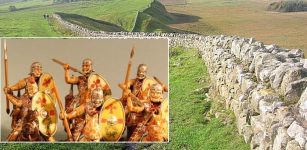 Hadrian’s Wall: North-West Frontier Of The Roman Empire For Nearly 300 Years
Featured Stories | Sep 1, 2020
Hadrian’s Wall: North-West Frontier Of The Roman Empire For Nearly 300 Years
Featured Stories | Sep 1, 2020 -
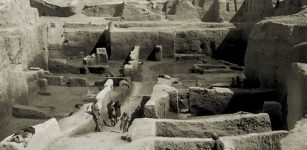 Iraq’s Ancient Kish City Survived The Great Flood – Today It’s Neglected And Lies Buried In Sand
Civilizations | Sep 24, 2015
Iraq’s Ancient Kish City Survived The Great Flood – Today It’s Neglected And Lies Buried In Sand
Civilizations | Sep 24, 2015 -
 Ancient Basilica Cistern: Intriguing Hidden Subterranean World With Medusa Heads
Featured Stories | Dec 11, 2018
Ancient Basilica Cistern: Intriguing Hidden Subterranean World With Medusa Heads
Featured Stories | Dec 11, 2018 -
 Ancient Secrets Of The Amazon Jungle – Dangerous Expeditions And Hidden Treasures – Part 1
Featured Stories | Mar 1, 2019
Ancient Secrets Of The Amazon Jungle – Dangerous Expeditions And Hidden Treasures – Part 1
Featured Stories | Mar 1, 2019 -
 Daedalus And Icarus Who Forever Remained An Example For Many Dreamers
Featured Stories | Sep 11, 2023
Daedalus And Icarus Who Forever Remained An Example For Many Dreamers
Featured Stories | Sep 11, 2023 -
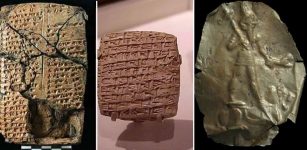 Kültepe: Once Part Of The Kingdom Of Hittites And The Center of a complex network of Assyrian trade colonies in the 2nd millennium B.C.
Civilizations | Oct 16, 2015
Kültepe: Once Part Of The Kingdom Of Hittites And The Center of a complex network of Assyrian trade colonies in the 2nd millennium B.C.
Civilizations | Oct 16, 2015 -
 Controversial “Life Of St. Issa” Scroll Reveals Jesus Spent Several Years In India And Tibet
Artifacts | Nov 4, 2014
Controversial “Life Of St. Issa” Scroll Reveals Jesus Spent Several Years In India And Tibet
Artifacts | Nov 4, 2014 -
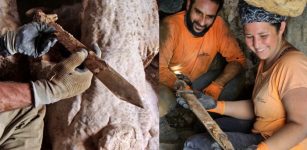 Four Rare And Incredibly Well-Preserved 1,900-Year-Old Roman Swords Found In Judean Desert
Archaeology | Sep 6, 2023
Four Rare And Incredibly Well-Preserved 1,900-Year-Old Roman Swords Found In Judean Desert
Archaeology | Sep 6, 2023 -
 Ancient Romans Invented The First Bound Book
Ancient History Facts | Sep 25, 2017
Ancient Romans Invented The First Bound Book
Ancient History Facts | Sep 25, 2017 -
 Human Occupation In Lava Tube Cave In Saudi Arabia – First Evidence Discovered
Archaeology | Apr 18, 2024
Human Occupation In Lava Tube Cave In Saudi Arabia – First Evidence Discovered
Archaeology | Apr 18, 2024 -
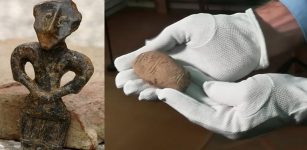 7,000-Year-Old Inscription With Undeciphered Vinca Script – One Of The World’s Earliest Writing Systems Discovered
Archaeology | Feb 17, 2018
7,000-Year-Old Inscription With Undeciphered Vinca Script – One Of The World’s Earliest Writing Systems Discovered
Archaeology | Feb 17, 2018 -
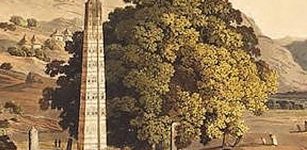 Ancient African Empires’ Impact On Migration Revealed By Genetics
Archaeology | Mar 31, 2023
Ancient African Empires’ Impact On Migration Revealed By Genetics
Archaeology | Mar 31, 2023 -
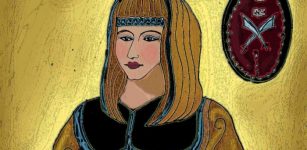 Sayyida Al Hurra – Feared And Respected Pirate Queen Of Morocco Had No-One To Turn At The End
Featured Stories | Mar 11, 2019
Sayyida Al Hurra – Feared And Respected Pirate Queen Of Morocco Had No-One To Turn At The End
Featured Stories | Mar 11, 2019 -
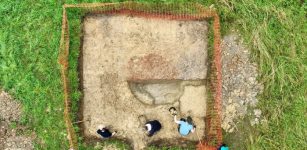 Mystery Of The Roman Tile Kiln At Brandiers Farm Solved!
Archaeology | Aug 18, 2023
Mystery Of The Roman Tile Kiln At Brandiers Farm Solved!
Archaeology | Aug 18, 2023

